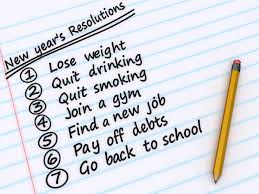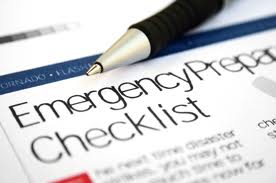Over 60% of Americans that make New Years resolutions will keep them through January. After that, the number continues to decline as the months go by. There are many reasons as to why so many resolutions are not maintained, but there are ways in which to improve your chances of achieving the goal.
1) Make it Positive: Resolutions that involve denying yourself something, such as diets, can be difficult. Instead, make the goal something positive, such as attending a fitness class 3 times per week for the year. This type of resolution can help you obtain the ultimate goal of weight-loss, but it will seem less restrictive in the process.
2) Be Specific: The most essential part of developing a goal is to outline in specifics what the goal is and how you will achieve it. For example, if your resolution is to read more, perhaps you could make a goal to complete one book every two weeks, at minimum. Create a calendar and keep yourself accountable to noting when the next reading deadline is and you’ll have greater chances of finishing the goal. 
3) Reinforce Yourself: If you’re working towards a goal, it helps to have reinforcement to encourage you. This can come in many forms, such as positive support from friends or family or perhaps a reward of a shopping spree after a benchmark has been met. When setting your goal timeline, add in benchmarks of when you will receive said reward and you’ll have something to look forward to while you are working.
4) Automate: The best way to achieve a goal is to remove yourself as the active participant. For instance, if your goal is to save more money this year, set up at automatic savings transfer to your savings account each payday. Without even thinking about it, you’ll have more money saved by the end of the year.
5) Be Realistic: Goals that are attainable are easier to work towards. Select resolutions that you have a high likelihood of achieving, such as losing 15lbs instead of 50lbs or attempting to have a more organized calendar instead of having a more organized life. Once you obtain the initial goal you can re-plan for future improvements.
We wish you luck in acheiving your New Years Resolutions and a Happy New Year!
TWOW

 Google Plus
Google Plus ing is broken or needs repair set the items aside and take appropriate action. Then determine if there are gaps in your collection that need to be filled or if there is anything special you’d like to add this year. Take care of all decoration shopping before you start the actual decorating process.
ing is broken or needs repair set the items aside and take appropriate action. Then determine if there are gaps in your collection that need to be filled or if there is anything special you’d like to add this year. Take care of all decoration shopping before you start the actual decorating process.






 2) Decorations: Halloween decorations can help to get your family and neighborhood in the holiday spirit. Plan on decorating your home and yard by the weekend of October 20th. If you’re carving pumpkins, ideal timing is the weekend before (27th) Halloween to ensure they stay fresh. Keep in mind when you are decorating that the weather changes quickly this time of year, so if you have delicate ghosts or spider webs, be sure to bring them in before any rain hits.
2) Decorations: Halloween decorations can help to get your family and neighborhood in the holiday spirit. Plan on decorating your home and yard by the weekend of October 20th. If you’re carving pumpkins, ideal timing is the weekend before (27th) Halloween to ensure they stay fresh. Keep in mind when you are decorating that the weather changes quickly this time of year, so if you have delicate ghosts or spider webs, be sure to bring them in before any rain hits.
